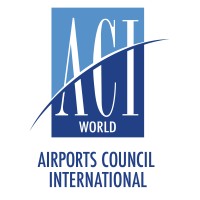India and the US Forge Ahead in Clean Energy Collaboration
September 19, 2024, 10:20 pm

Location: United States, District of Columbia, Washington
Employees: 10001+
Founded date: 1977
Total raised: $45M

Location: Canada, Quebec, Montreal
Employees: 51-200
Founded date: 1991
In a world grappling with climate change, India and the United States are stepping up their game. The two nations are not just talking; they are taking action. Their recent partnership focuses on sustainable aviation fuel (SAF) and hydrogen technologies. This collaboration is a beacon of hope in the quest for cleaner energy solutions.
During the Strategic Clean Energy Partnership (SCEP) dialogue, US Energy Secretary Jennifer Granholm and Indian Minister of Petroleum and Natural Gas Hardeep Singh Puri laid the groundwork for a robust energy alliance. They recognized the urgent need for a transition to cleaner energy sources. The emphasis is on creating a sustainable energy future that is accessible and affordable for all.
Sustainable aviation fuel is a game-changer. It’s produced from non-petroleum feedstocks, significantly reducing emissions from air travel. SAF can be derived from various renewable sources, including food waste and woody biomass. This innovative fuel can be blended with traditional jet fuel, making it a practical solution for the aviation industry. The partnership aims to foster research and development in this area, ensuring that the supply chain is robust and efficient.
But the collaboration doesn’t stop at aviation. The electrification of medium and heavy-duty vehicles is also on the agenda. This shift is crucial for reducing emissions in the transportation sector. The use of hydrogen in buses, tractors, and heavy equipment is another focus. Hydrogen, often dubbed the fuel of the future, holds immense potential for a cleaner energy landscape.
The dialogue also highlighted the importance of modernizing the power distribution sector. Reliable power supply is the backbone of any economy. India’s push for smart metering deployment is a step in the right direction. It ensures that consumers have access to a consistent and efficient power supply.
The partnership is not just about technology; it’s about collaboration. Both nations are keen on increasing investments in each other’s clean energy markets. This mutual investment is vital for scaling up clean energy technologies. It’s a two-way street, where both countries can benefit from shared knowledge and resources.
The discussions also touched on the role of Indian Railways in achieving net-zero carbon emissions by 2030. This ambitious goal is commendable and sets a precedent for other sectors. The collaboration aims to support India’s renewable energy procurement, which is a significant step towards sustainability.
In addition to SAF and hydrogen, the partnership is exploring carbon capture, utilization, and storage (CCUS). This technology is essential for mitigating the effects of fossil fuel use. By capturing carbon emissions, both countries can work towards a cleaner atmosphere.
The dialogue also addressed the importance of energy efficiency. The ministers expressed support for super-efficient appliances and high-efficiency cooling systems. These initiatives can significantly reduce energy consumption and lower greenhouse gas emissions.
The collaboration is a testament to the growing relationship between India and the US. It reflects a shared commitment to tackling climate change and promoting sustainable energy solutions. The partnership is not just about immediate benefits; it’s about laying the groundwork for a sustainable future.
Meanwhile, significant infrastructure developments are underway in India. The Tuticorin Airport in Tamil Nadu is undergoing a major upgrade, set for completion in December 2024. This project, valued at Rs 3.81 billion, will enhance the airport's capacity and efficiency. It’s a clear indication that India is investing in its infrastructure to support a growing economy.
However, rising airfares have raised concerns among travelers. The Airports Council International (ACI) clarified that these hikes are not linked to increased airport charges. Airport charges are just a small part of the overall airfare. The focus should be on maintaining essential infrastructure, which is crucial for the aviation ecosystem.
As India and the US move forward, the focus remains on innovation and collaboration. The partnership is a blueprint for how countries can work together to address global challenges. It’s about sharing expertise, resources, and a vision for a cleaner, more sustainable world.
In conclusion, the collaboration between India and the US in clean energy is a significant step towards a sustainable future. The focus on sustainable aviation fuel, hydrogen technologies, and energy efficiency is commendable. As both nations continue to strengthen their ties, the world watches with hope. The journey towards a cleaner planet is long, but with partnerships like this, the path becomes clearer. Together, they are not just dreaming of a better future; they are building it.
During the Strategic Clean Energy Partnership (SCEP) dialogue, US Energy Secretary Jennifer Granholm and Indian Minister of Petroleum and Natural Gas Hardeep Singh Puri laid the groundwork for a robust energy alliance. They recognized the urgent need for a transition to cleaner energy sources. The emphasis is on creating a sustainable energy future that is accessible and affordable for all.
Sustainable aviation fuel is a game-changer. It’s produced from non-petroleum feedstocks, significantly reducing emissions from air travel. SAF can be derived from various renewable sources, including food waste and woody biomass. This innovative fuel can be blended with traditional jet fuel, making it a practical solution for the aviation industry. The partnership aims to foster research and development in this area, ensuring that the supply chain is robust and efficient.
But the collaboration doesn’t stop at aviation. The electrification of medium and heavy-duty vehicles is also on the agenda. This shift is crucial for reducing emissions in the transportation sector. The use of hydrogen in buses, tractors, and heavy equipment is another focus. Hydrogen, often dubbed the fuel of the future, holds immense potential for a cleaner energy landscape.
The dialogue also highlighted the importance of modernizing the power distribution sector. Reliable power supply is the backbone of any economy. India’s push for smart metering deployment is a step in the right direction. It ensures that consumers have access to a consistent and efficient power supply.
The partnership is not just about technology; it’s about collaboration. Both nations are keen on increasing investments in each other’s clean energy markets. This mutual investment is vital for scaling up clean energy technologies. It’s a two-way street, where both countries can benefit from shared knowledge and resources.
The discussions also touched on the role of Indian Railways in achieving net-zero carbon emissions by 2030. This ambitious goal is commendable and sets a precedent for other sectors. The collaboration aims to support India’s renewable energy procurement, which is a significant step towards sustainability.
In addition to SAF and hydrogen, the partnership is exploring carbon capture, utilization, and storage (CCUS). This technology is essential for mitigating the effects of fossil fuel use. By capturing carbon emissions, both countries can work towards a cleaner atmosphere.
The dialogue also addressed the importance of energy efficiency. The ministers expressed support for super-efficient appliances and high-efficiency cooling systems. These initiatives can significantly reduce energy consumption and lower greenhouse gas emissions.
The collaboration is a testament to the growing relationship between India and the US. It reflects a shared commitment to tackling climate change and promoting sustainable energy solutions. The partnership is not just about immediate benefits; it’s about laying the groundwork for a sustainable future.
Meanwhile, significant infrastructure developments are underway in India. The Tuticorin Airport in Tamil Nadu is undergoing a major upgrade, set for completion in December 2024. This project, valued at Rs 3.81 billion, will enhance the airport's capacity and efficiency. It’s a clear indication that India is investing in its infrastructure to support a growing economy.
However, rising airfares have raised concerns among travelers. The Airports Council International (ACI) clarified that these hikes are not linked to increased airport charges. Airport charges are just a small part of the overall airfare. The focus should be on maintaining essential infrastructure, which is crucial for the aviation ecosystem.
As India and the US move forward, the focus remains on innovation and collaboration. The partnership is a blueprint for how countries can work together to address global challenges. It’s about sharing expertise, resources, and a vision for a cleaner, more sustainable world.
In conclusion, the collaboration between India and the US in clean energy is a significant step towards a sustainable future. The focus on sustainable aviation fuel, hydrogen technologies, and energy efficiency is commendable. As both nations continue to strengthen their ties, the world watches with hope. The journey towards a cleaner planet is long, but with partnerships like this, the path becomes clearer. Together, they are not just dreaming of a better future; they are building it.